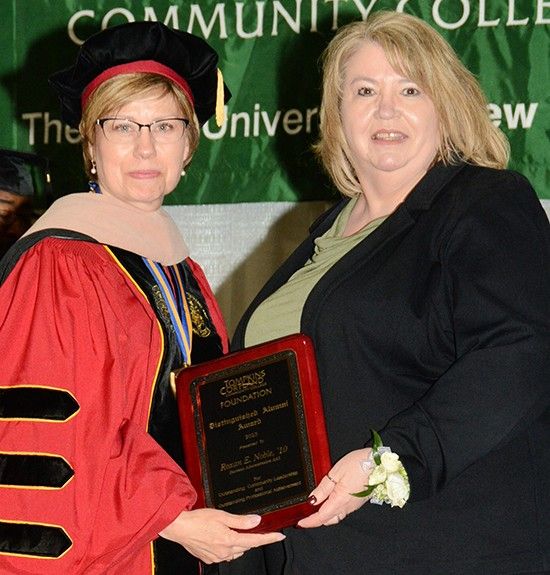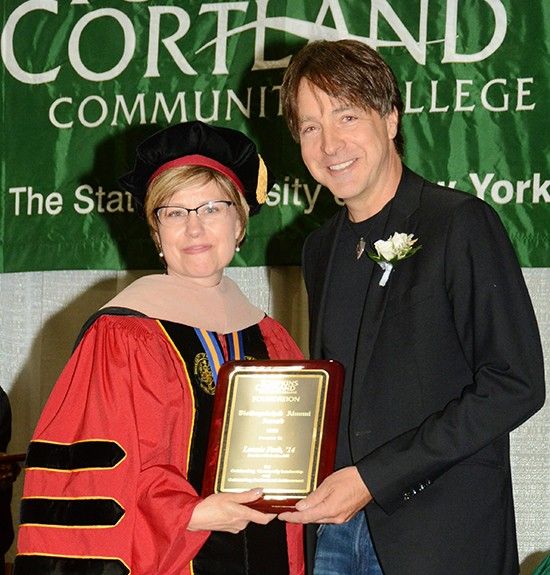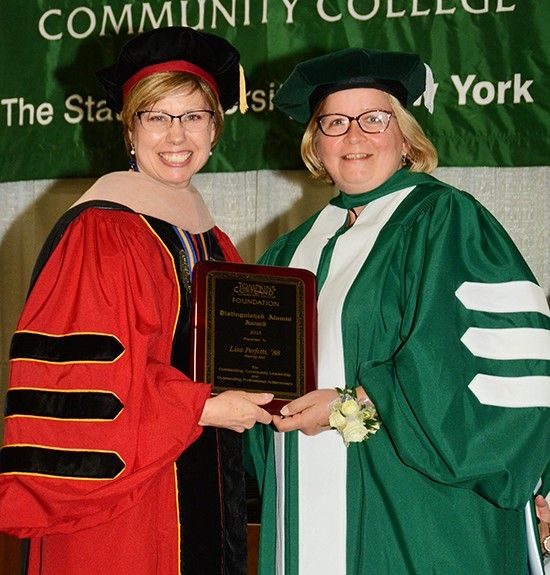Three Presented Distinguished Alumni Awards
The Distinguished Alumni Award of Tompkins Cortland Community College was presented to Roxan Noble, Lonnie Park, and Lisa Perfetti at the College’s commencement ceremony on May 23, 2023.
The Distinguished Alumni Award recognizes alums who have excelled in their professional life and in service to the community. After nominations from the community, a committee selects worthy recipients to honor.

President Amy Kremenek and Distinguished Alumni Roxan Noble
Roxan Noble graduated in 2010, having completed her business administration degree the same year her daughter graduated from high school and while working full-time. She has worked for Tompkins County for nearly three decades, currently serving as the Airport Director. A respected leader in the community, she was recognized for her devotion to her work the service of the people of Tompkins County.

President Amy Kremenek and Distinguished Alumni Lonnie Park
Lonnie Park is a member of the class of 2014. He started at TC3 in the 1980s, but left to pursue a career in music that flourished to the tune of multiple Grammy’s and a host of other honors. Not only did he return to finish his degree, but he has also become a tremendous friend to the College’s communications programs, helping design courses and coming to campus each year to share his experiences with current students.

President Amy Kremenek and Distinguished Alumni Lisa Perfetti
Lisa Perfetti graduated with a degree in nursing in 1988. She has a long tradition of service in the medical field, including more than 30 years as a registered nurse. She serves the community as a member of the Cortland County Health Department, notable helping guide the community through the pandemic as the Public Health Director. She is a member of the College’s Board of Trustees and serves on various community boards that work to provide medical access to those in rural areas and advocate for individuals with disabilities.